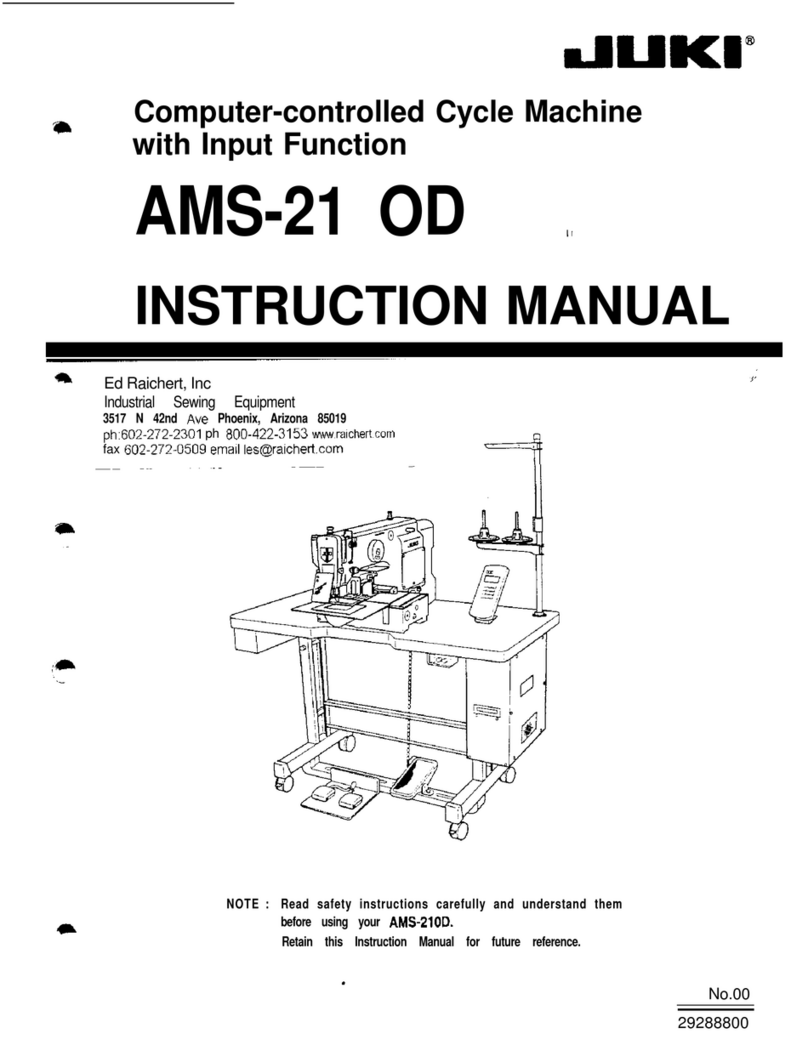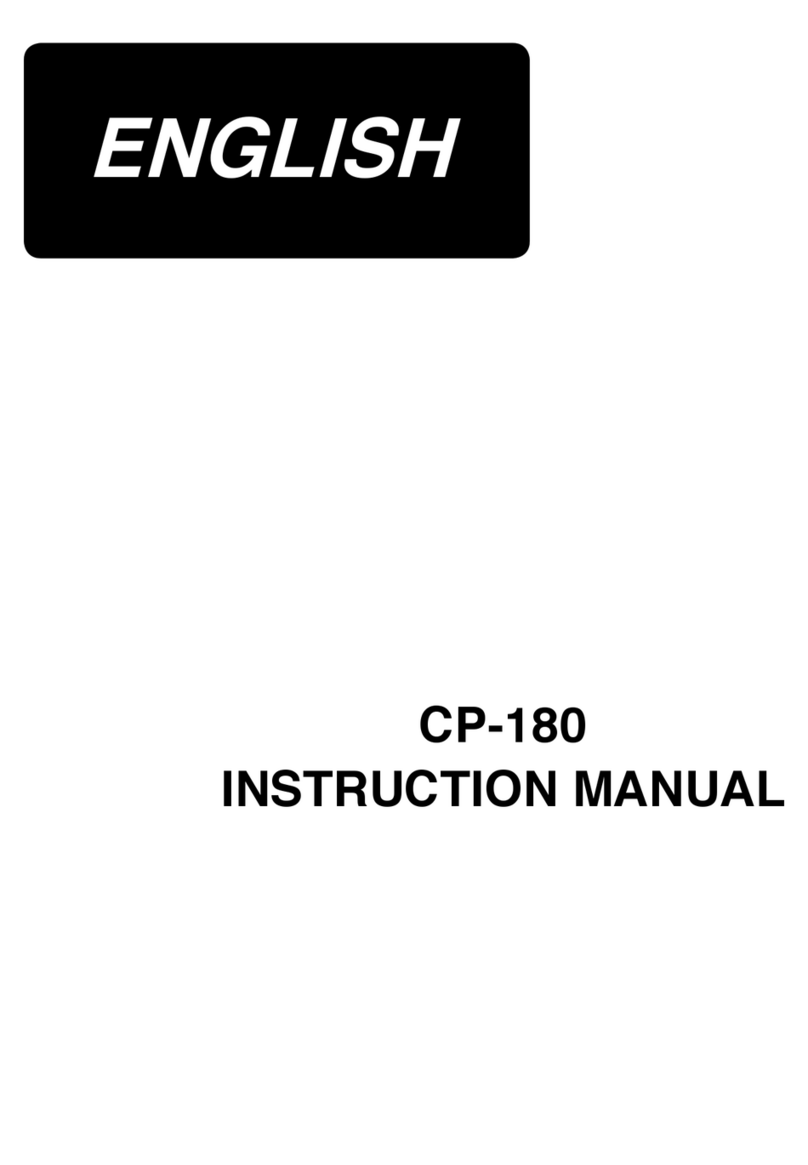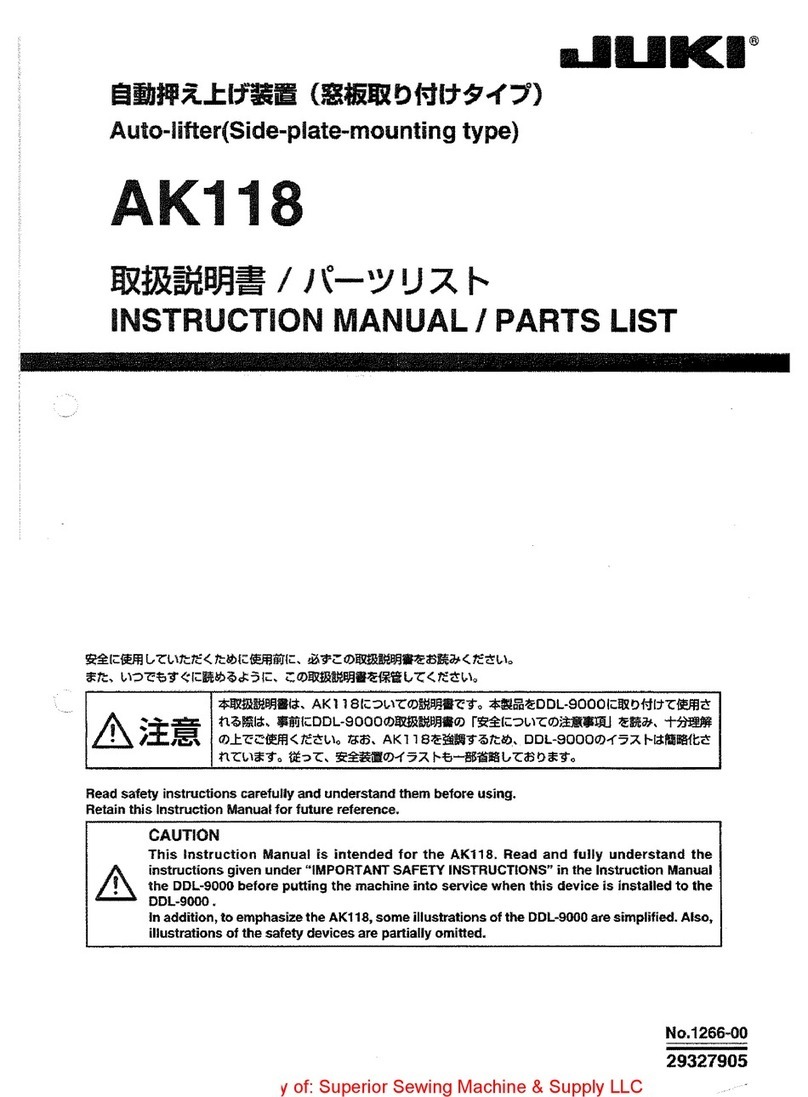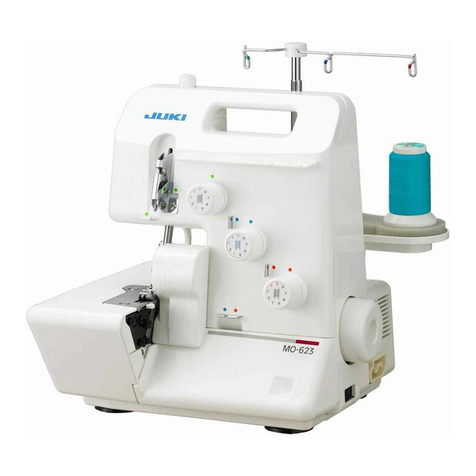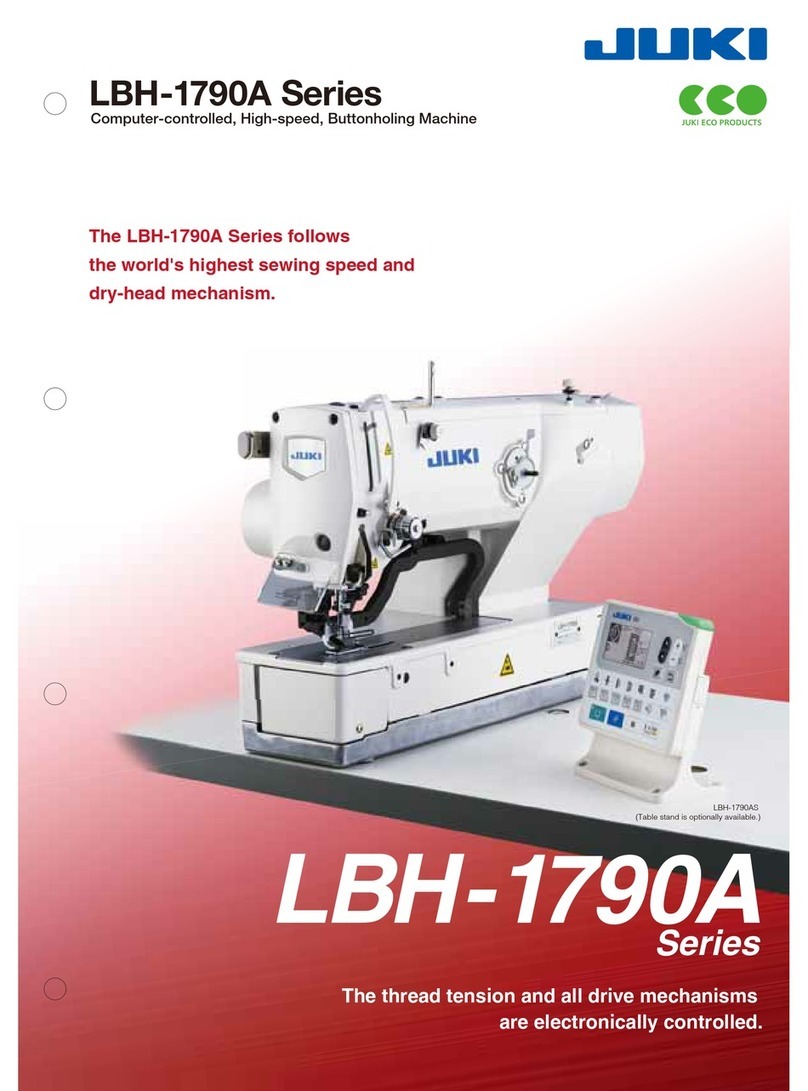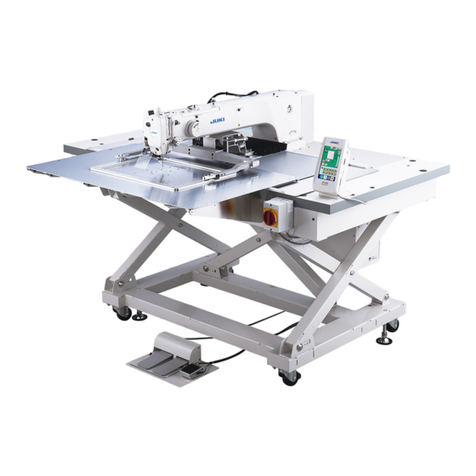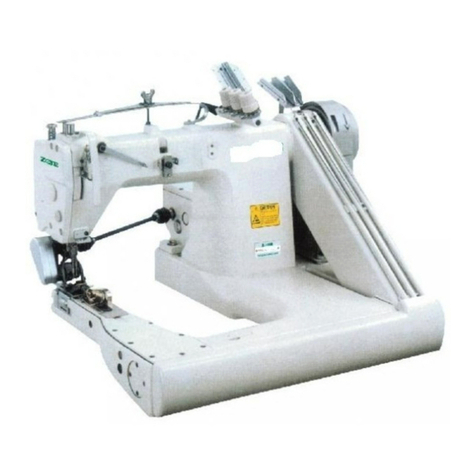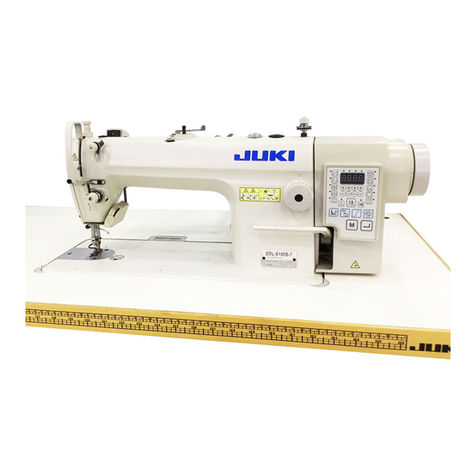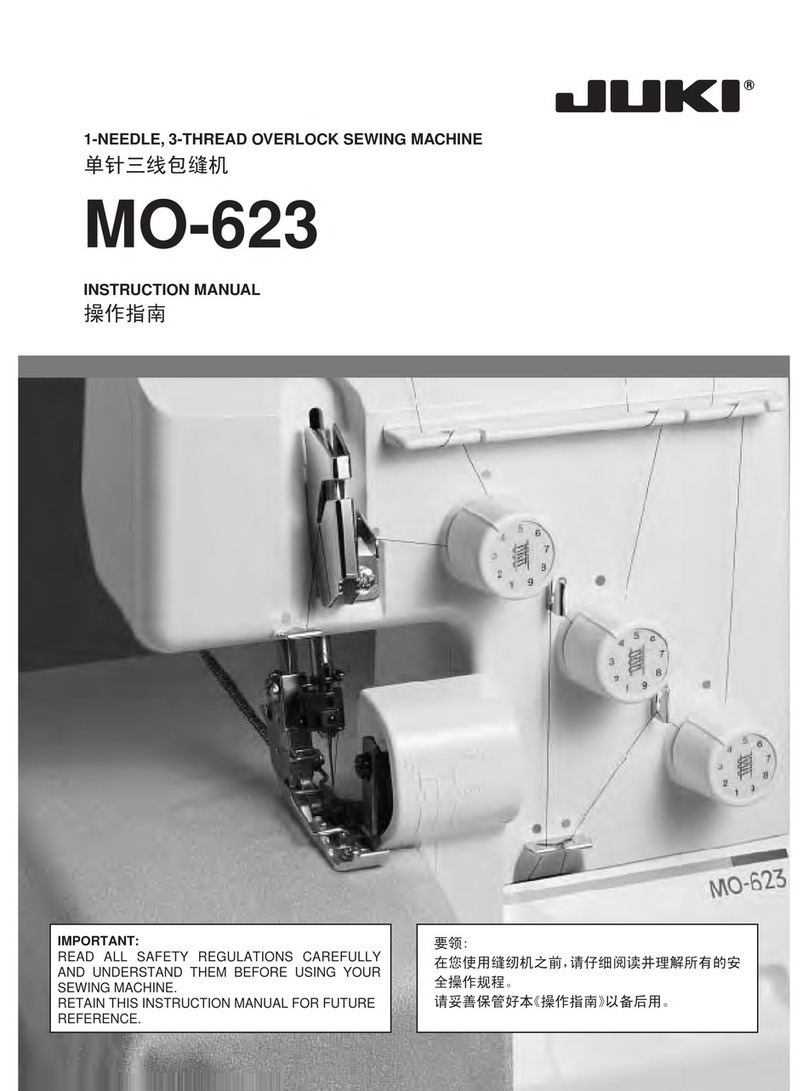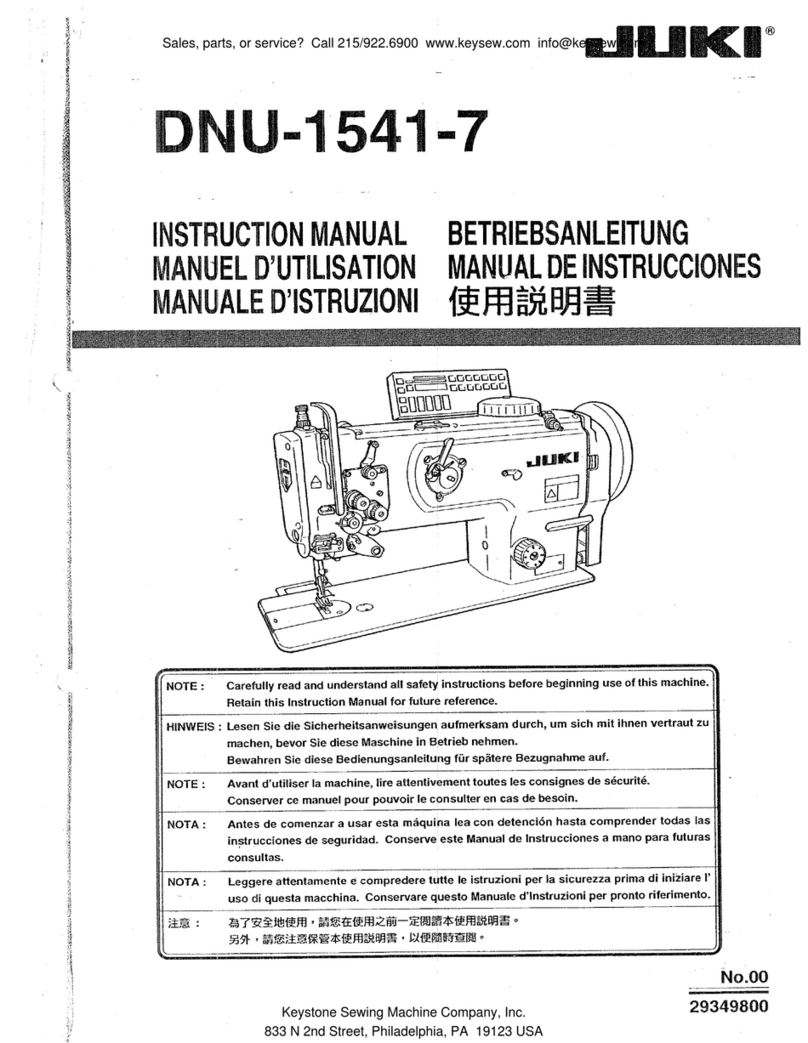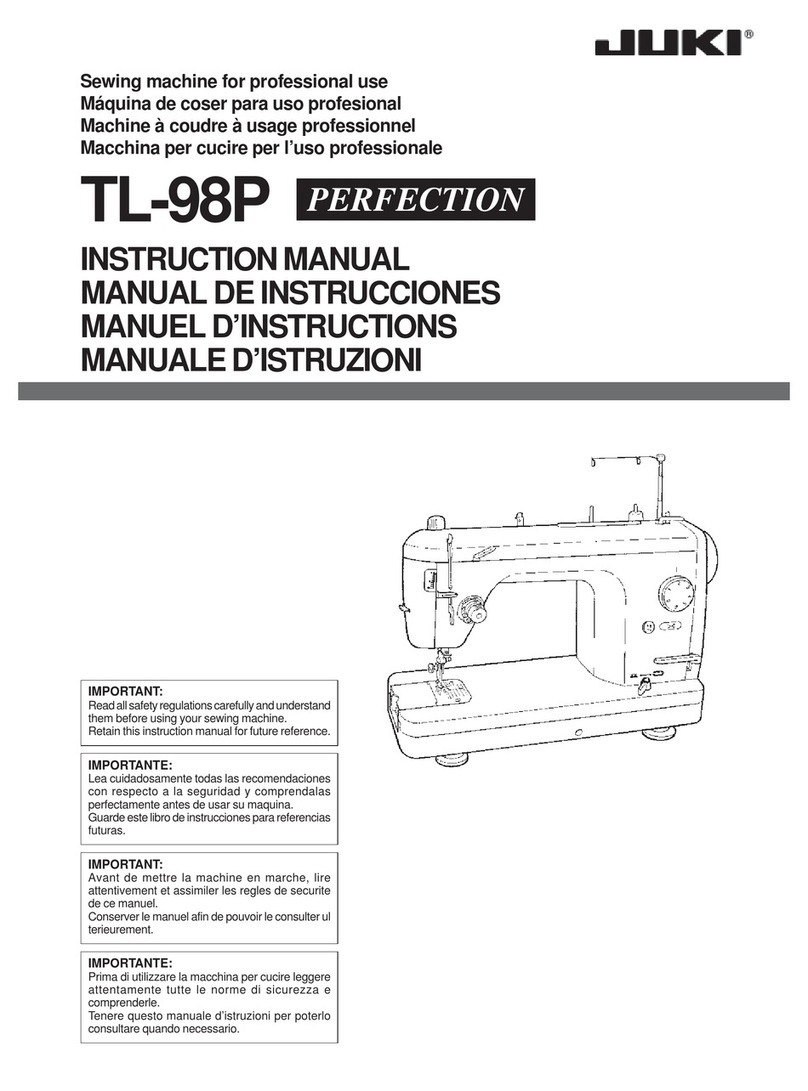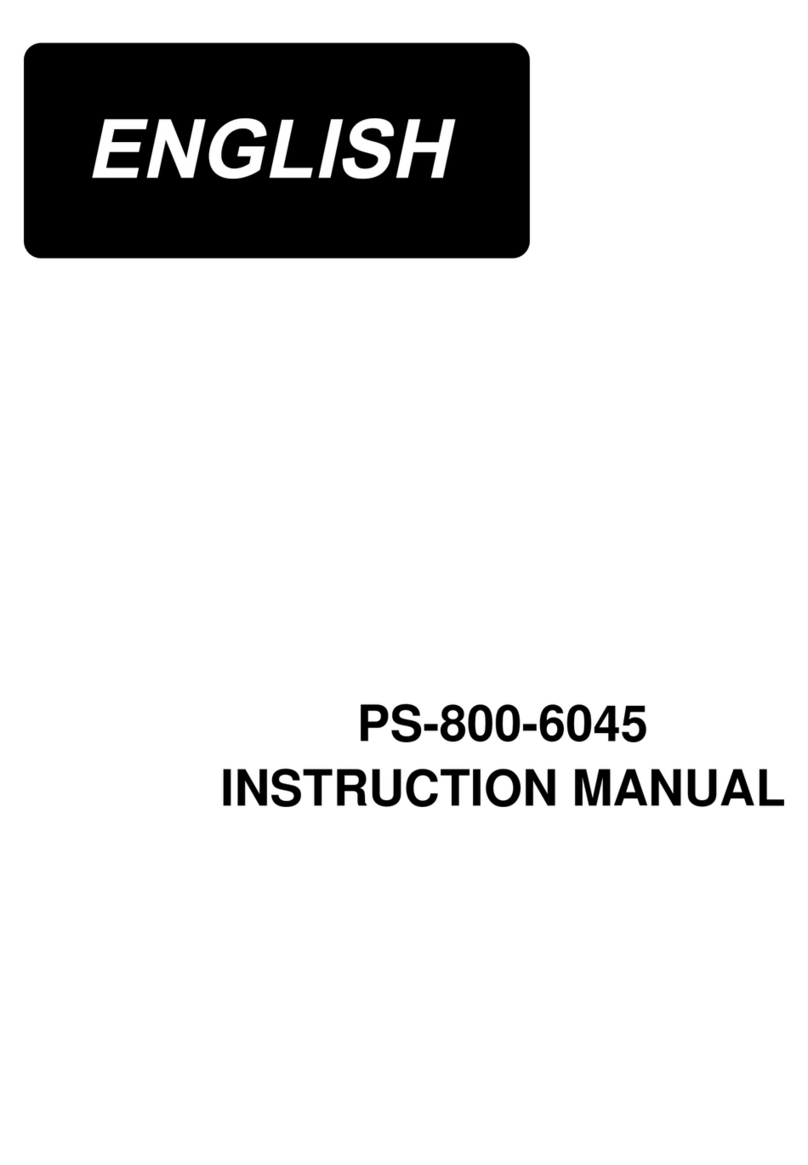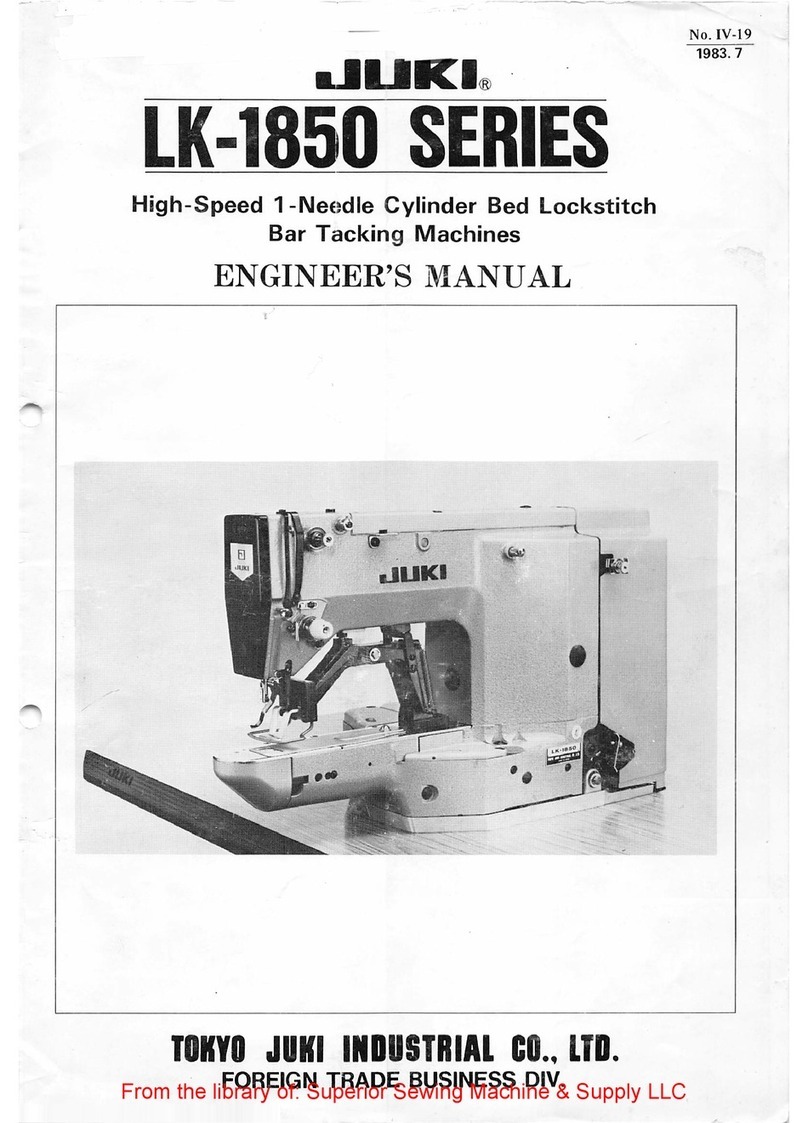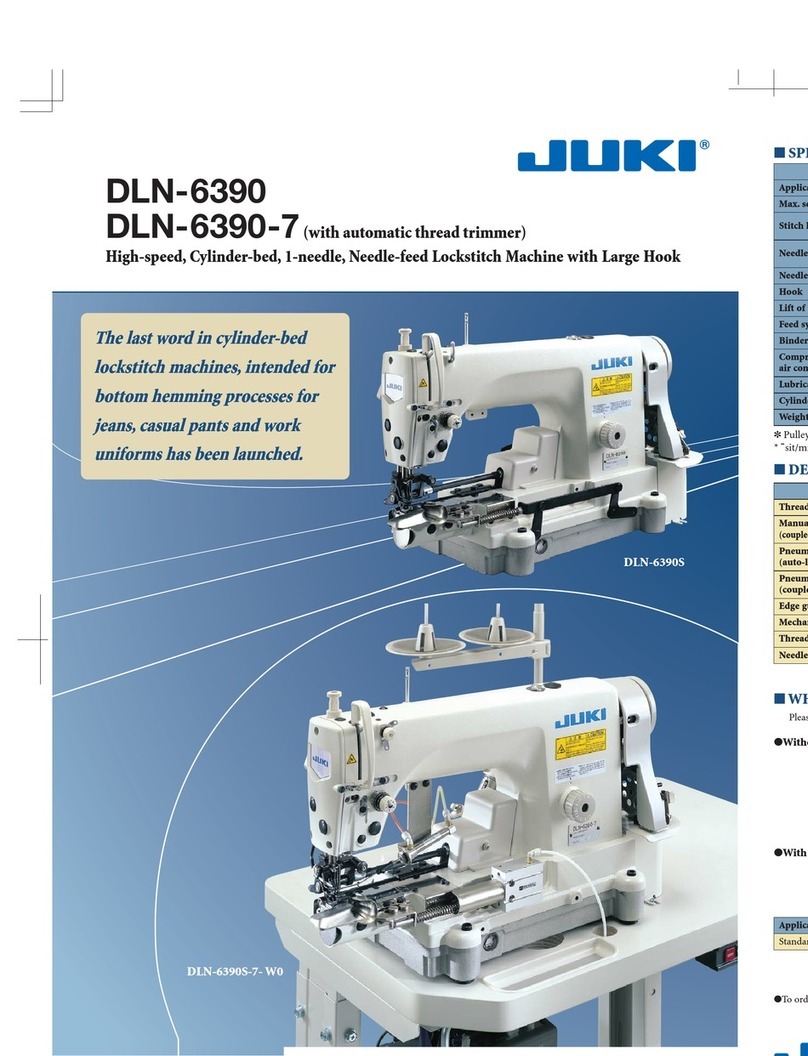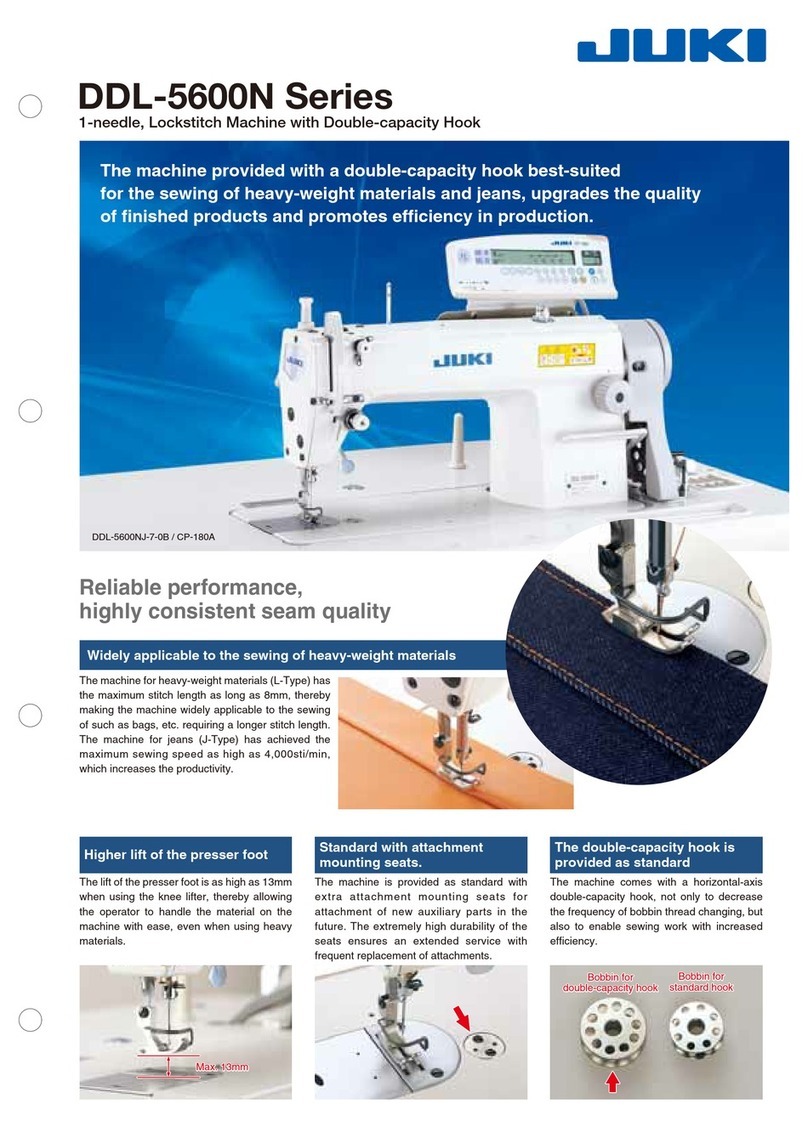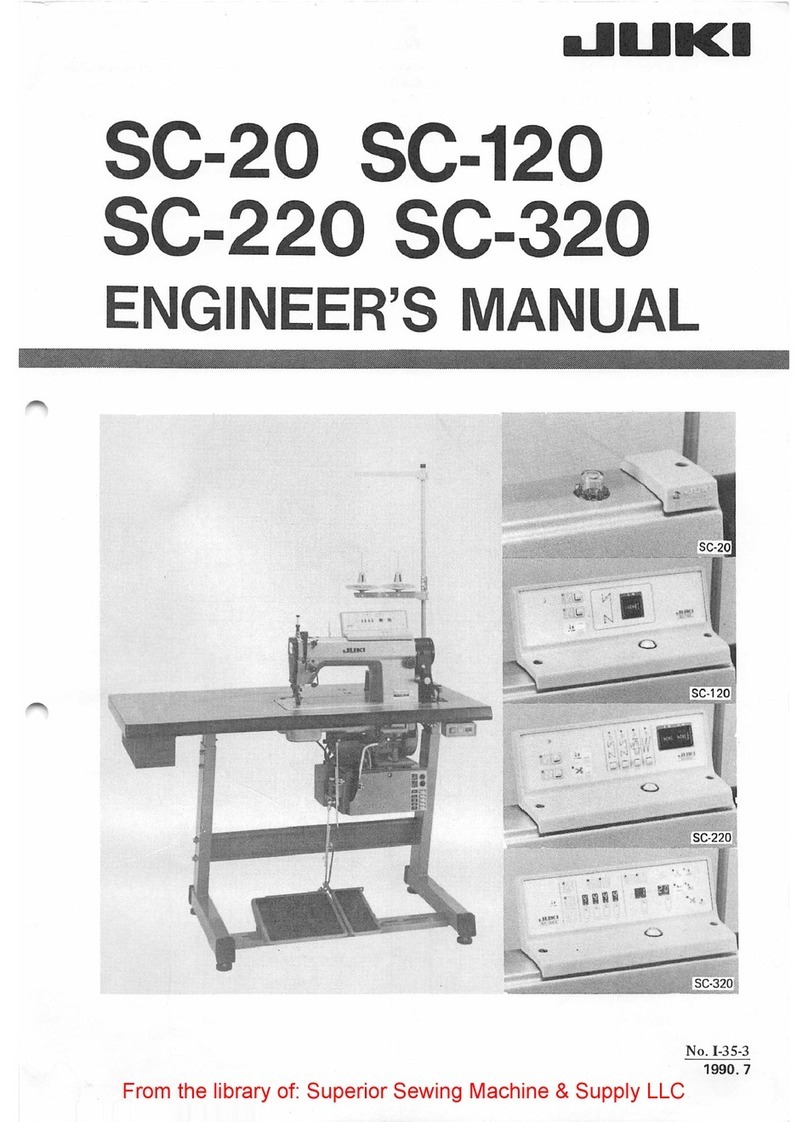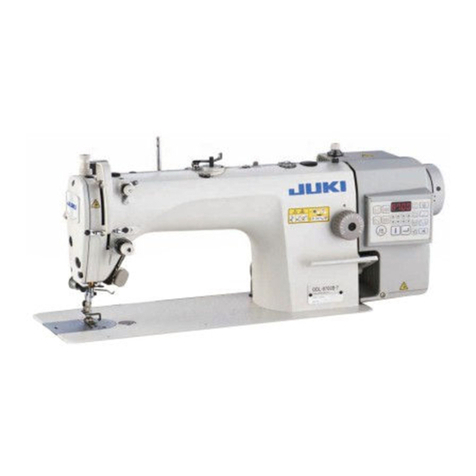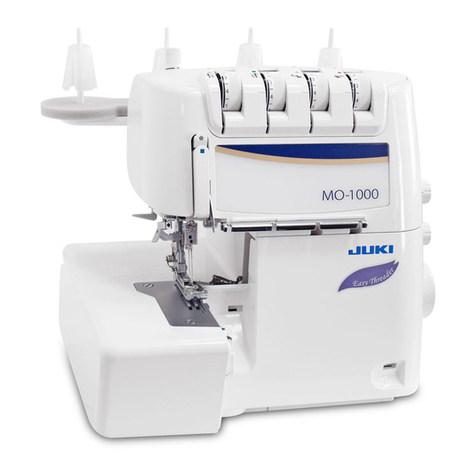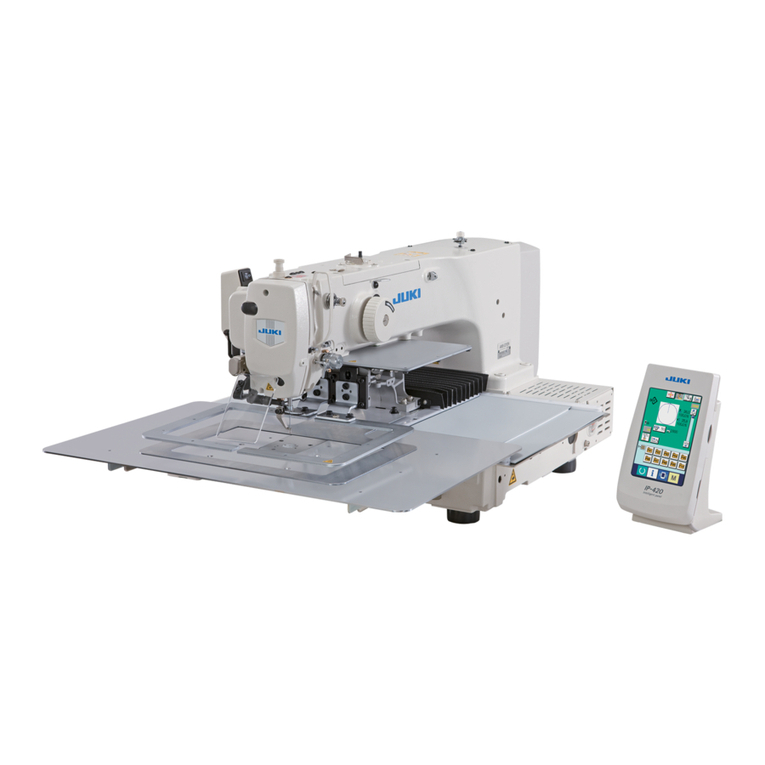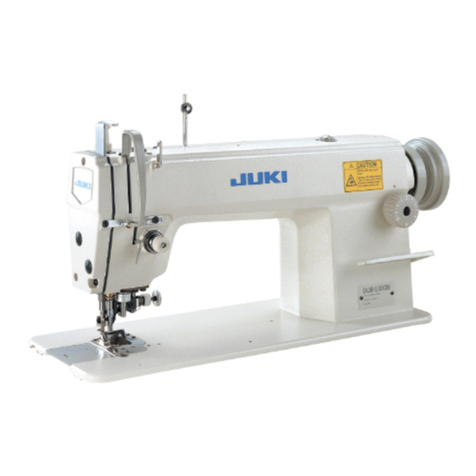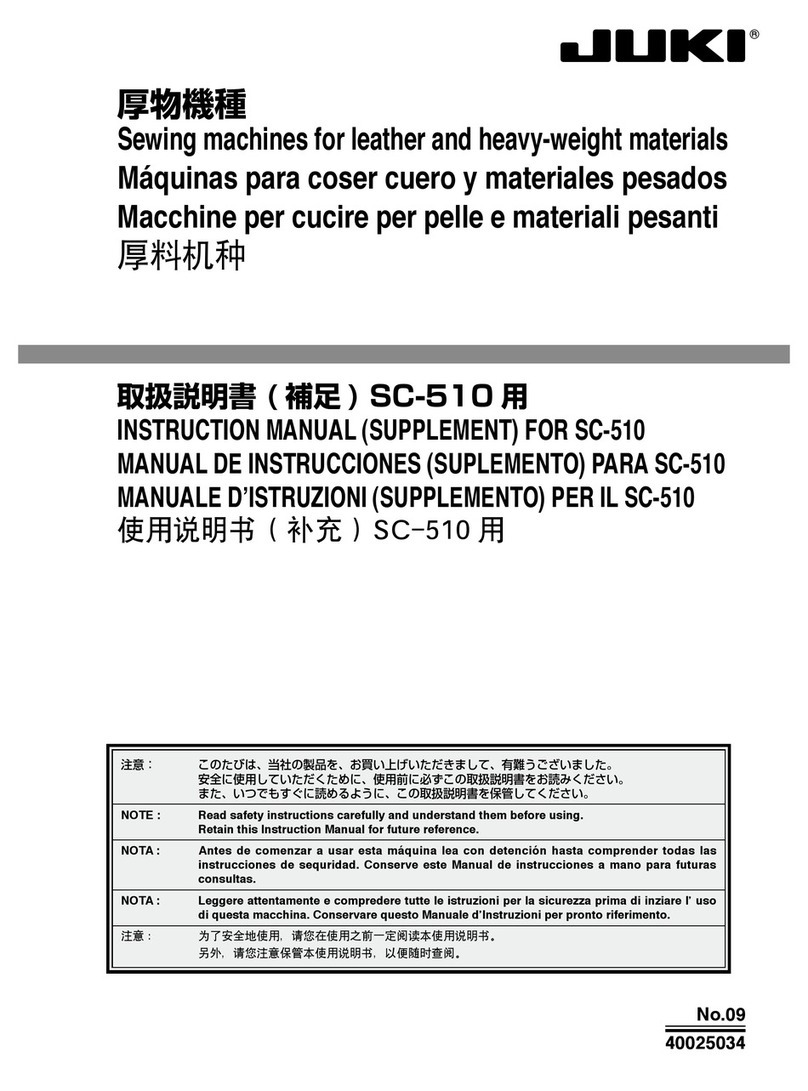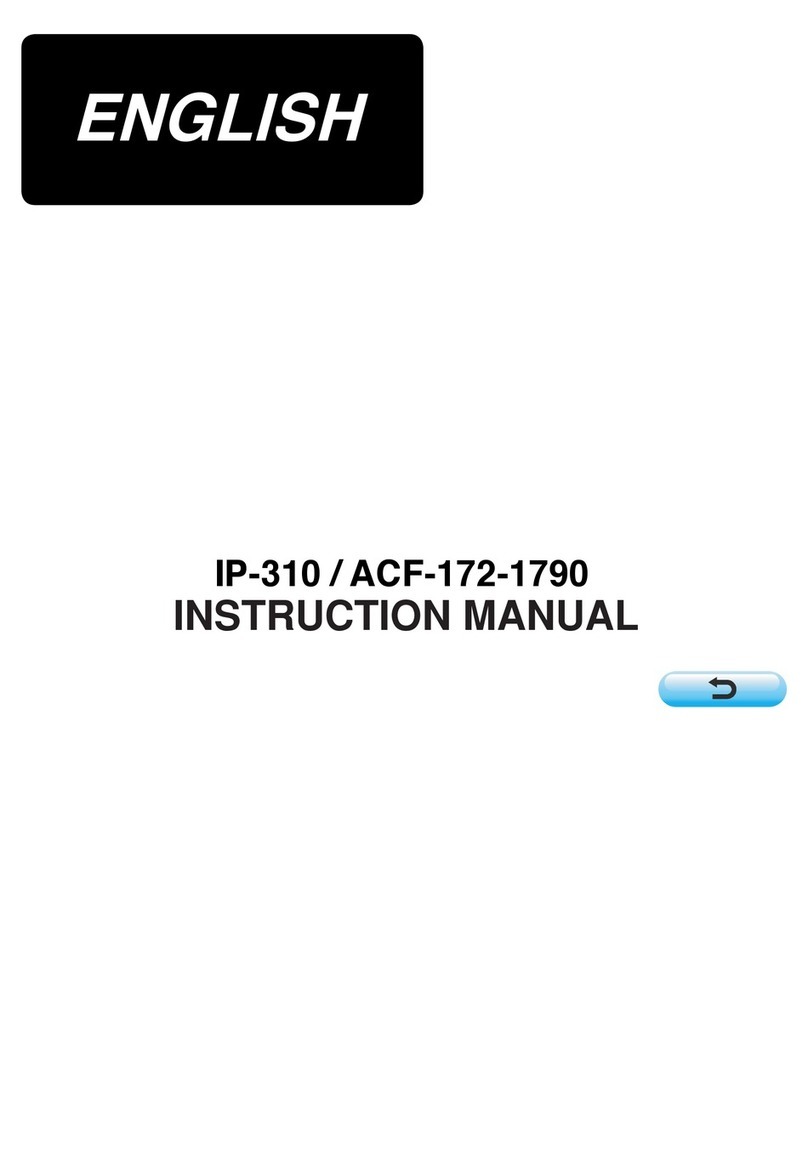
4
CONTENIDO
Dimensiones: 410 mm × 170 mm × 300 mm
Peso del equipo: 7,3 kg
Voltaje nominal: 230V ~
Frecuencia nominal: 50Hz
Consumo nominal: 65W
Temperatura ambiente nominal: 15 - 35°C
Nivel de ruido acústico: menos de 70db(A)
Para versión europea
Check chart ce c ........................................... 72 - 73
1. PRINCIPALES PARTES DE LA MAQUINA
Identificación de la máquina ................................... 6 - 9
Accesorios ........................................................... 10 - 11
Preparación de la máquina ................................. 12 - 13
Porta carretes, Palanca pie prensatelas ............ 14 - 15
Regulador de presión .......................................... 14 - 15
Control de dientes ............................................... 16 - 17
Conversión para la costura con brazo ................ 16 - 17
Palanca de la puntada de retroceso ................... 16 - 17
Selector e indicador de puntadas ....................... 18 - 19
Control largo de puntada y puntada super (elástica) .. 18 - 19
Selector ancho puntada ...................................... 18 - 19
Devanado de la canilla ........................................ 20 - 21
Enhebrado del hilo de la canilla .......................... 22 - 23
Tabla de hilo, aguja y material ............................ 24 - 25
Enhebrado del hilo superior ................................ 26 - 27
Empleo del enhebrador aguja ............................. 28 - 29
Recogida del hilo de la canilla ............................ 30 - 31
2. EMPEZER A COSER
Esquema de ajuste de la máquina ..................... 32 - 35
Puntada recta ...................................................... 36 - 45
Giro en esquinas en ángulo recto, Zurcido,
Inserción de cremalleras y vivo,
Cosiendo materiales pesados,
Ajuste de la tensión del hilo superior
Cambio del pie prensatelas ................................ 44 - 45
Puntada zig-zag .................................................. 46 - 47
Puntada de relleno
Puntada invisible ................................................. 48 - 49
Zig-zag de tres puntadas .................................... 50 - 51
Puntada de acción doble .................................... 50 - 51
Dobladillo de concha ........................................... 52 - 53
Fagoting (Diente de rata) .................................... 52 - 53
Puntadas elásticas .............................................. 54 - 59
Puntada recta triple, Puntada zig-zag a dos agujas,
Puntada overlock, Puntada nido de abeja,
Puntada overlock elástica, Puntada raspa,
Puntada overlock elástica,
Puntadas elástica de parches
Diseños de bordados decorativos ...................... 60 - 61
Tipos de puntadas decorativas
Confección de ojales ........................................... 62 - 67
Ojales con cordón,
Ajuste de la compensación puntadas ojal
3. CUIDE SU MAQUINA
Limpiar el area del transportador y la lanzadera ........ 68 - 69
Cambio de la bombilla ........................................ 70 - 71
4. CUADRO DE EXAMEN PARA
LOS PROBLEMAS DE EJECUCION
